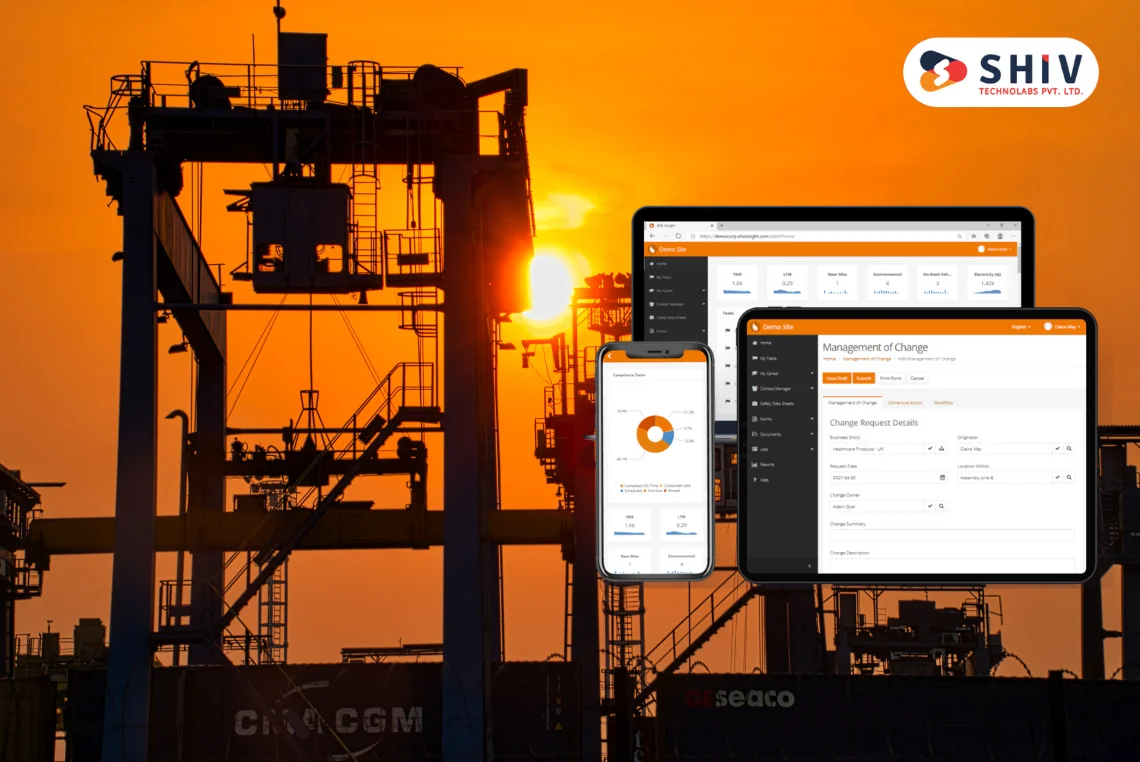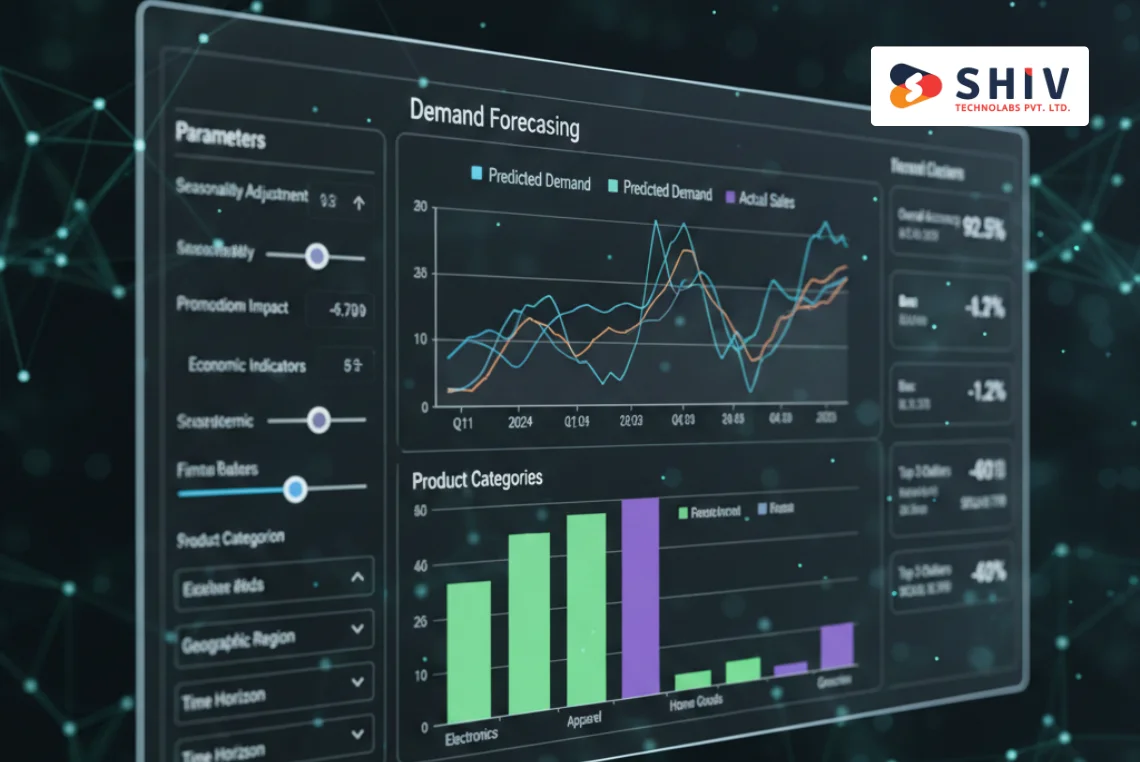Table of Contents
Construction bidding is one of the most time-sensitive and data-heavy stages in any project. Yet, many teams still handle it through spreadsheets, long email chains, and shared drives. This old process often causes missed bids, document confusion, and lost opportunities.
That’s why more firms are switching to construction bidding software, digital systems that organize bid invitations, subcontractor communication, and document control in one place.
For SaaS providers, white-label versions are even more valuable. They allow multiple construction companies to use the same platform under their own brand, saving time and opening new revenue streams.
But how much does it cost to build one? That’s exactly what this guide explains, from core pricing tiers to the factors that shape the final budget.
Construction Bidding Software Development Cost Breakdown
The cost of developing a construction bidding platform varies widely based on scale and purpose. A single-company system costs far less than a full white-label SaaS built for multiple clients.
Here’s a quick cost breakdown:
| Version Type | Key Features | Estimated Cost (USD) | Timeline |
| Basic (MVP) | Bid invitations, subcontractor portal, file sharing, due date tracking | $25,000 – $40,000 | 2–3 months |
| Advanced (Pro) | Bid comparison, prequalification, analytics, user roles, reporting | $45,000 – $70,000 | 3–4 months |
| White-label SaaS | Multi-tenant setup, branding, billing, APIs, partner dashboard | $75,000 – $120,000+ | 4–6 months |
Why the difference?
- White-label systems require multi-tenant architecture, meaning every client gets their own branded space.
- Adding integrations with ERP, e-signature, or estimation tools increases development effort.
- Hosting, user scalability, and data security add ongoing infrastructure costs.
For most construction tech startups, building a phased product, starting with a basic MVP and expanding toward a white-label SaaS, is the most cost-efficient path.
What Drives the Cost of Construction Bidding Software?
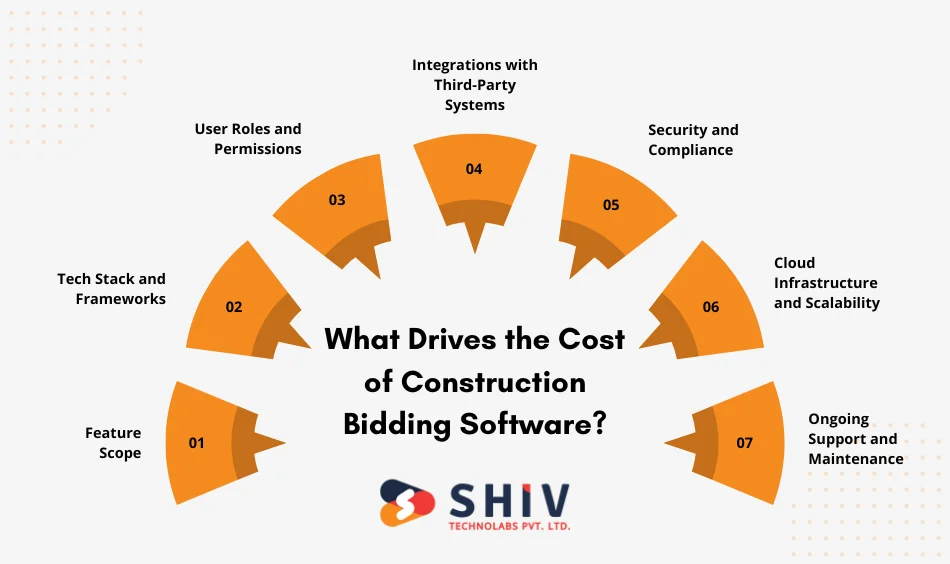
The cost of building a construction bidding platform depends on more than just the number of screens or features. It’s shaped by how the system will be used, who will access it, and how scalable it needs to be.
Let’s look at the major factors that influence development costs.
1. Feature Scope
Every new module adds design, development, and testing effort.
- A simple platform with invitations and file uploads stays budget-friendly.
- Adding bid comparison, analytics, or prequalification modules pushes the cost higher.
- White-label setups need extra layers for branding, billing, and tenant management.
Tip: Begin with a minimum viable product (MVP) and expand only after testing user demand.
2. Tech Stack and Frameworks
Choosing between open-source and licensed tech impacts your budget.
- Frameworks like React, Node.js, Django, and Flutter are popular for flexibility and lower setup costs.
- Cloud providers such as AWS or Azure may charge for storage, CDN, and database scaling.
- Using proprietary APIs or SDKs (e.g., Autodesk, DocuSign) adds licensing fees.
3. User Roles and Permissions
More user types mean more logic, screens, and access control:
- Admins manage all projects and bids.
- Contractors create bid packages.
- Subcontractors submit quotes and files.
- Clients or partners view progress and results.
Each role multiplies the testing and validation work, slightly increasing the total cost.
4. Integrations with Third-Party Systems
Linking the bidding software with existing tools adds major value and cost.
- ERP or accounting systems (like Odoo or QuickBooks) for project and budget sync.
- E-sign tools (DocuSign, Adobe Sign) for digital approvals.
- Takeoff or estimation tools to import the scope and quantities.
Such integrations typically add 10–20% to overall development time and expense.
5. Security and Compliance
Construction bids deal with confidential project data.
Security must be built from the start, not added later.
- Data encryption and SSL setup
- Secure file storage
- Role-based access control
- Activity logs and audit trails
Strong security increases initial cost slightly but prevents far more expensive risks later.
6. Cloud Infrastructure and Scalability
White-label software must handle multiple clients with their own data and settings.
That requires:
- Separate databases or schemas per tenant
- Load balancing and data isolation
- Scalable storage for drawings and attachments
This multi-tenant setup typically adds 15–25% to total project cost but enables long-term SaaS revenue.
7. Ongoing Support and Maintenance
After launch, you’ll still spend on:
- Bug fixes and version upgrades
- API updates when third-party tools change
- Cloud hosting and backup costs
- New feature rollouts based on client feedback
Plan for 15–20% of the initial development cost as yearly maintenance.
In short, your final budget depends on how complex your system needs to be, from basic bidding features to a full-scale white-label SaaS serving multiple construction firms.
Cost Comparison – Basic vs Advanced vs White-label SaaS
The best way to plan your budget is to understand what you get at each development level. Whether you want a simple in-house bidding tool or a white-label SaaS product, every tier comes with its own price and purpose.
Here’s a clear cost comparison:
| Version Type | Ideal For | Core Features | Estimated Cost (USD) | ROI Outlook |
| Basic (MVP) | Small or mid-sized contractors | Bid invitations, document sharing, subcontractor access, and due dates | $25,000 – $40,000 | Saves time and reduces manual errors |
| Advanced (Pro) | General contractors handling multiple projects | Bid comparison, prequalification, analytics dashboard, and role management | $45,000 – $70,000 | Higher control and data accuracy |
| White-label SaaS | Software vendors, agencies, or construction tech startups | Multi-tenant setup, custom branding, billing, API integration, partner admin | $75,000 – $120,000+ | Long-term recurring revenue through licensing |
1. How Each Tier Impacts Cost
Basic MVP:
- Lowest setup cost
- Fastest to launch (2–3 months)
- Good for testing workflows before full automation
Advanced Version:
- Adds analytics, role-based access, and reports
- Requires deeper testing and design
- Balances budget and scalability
White-label SaaS:
- Highest upfront cost due to branding, billing, and tenant logic
- Supports multiple companies under unique domains
- Designed for reselling and long-term ROI
2. Phased Development Helps Control Budget
Instead of building everything at once, start with the MVP. Once you confirm your user base and workflow success, expand into advanced features or a white-label structure.
This approach spreads cost across stages while reducing risk.
White-Label Architecture and Why It Adds Cost?
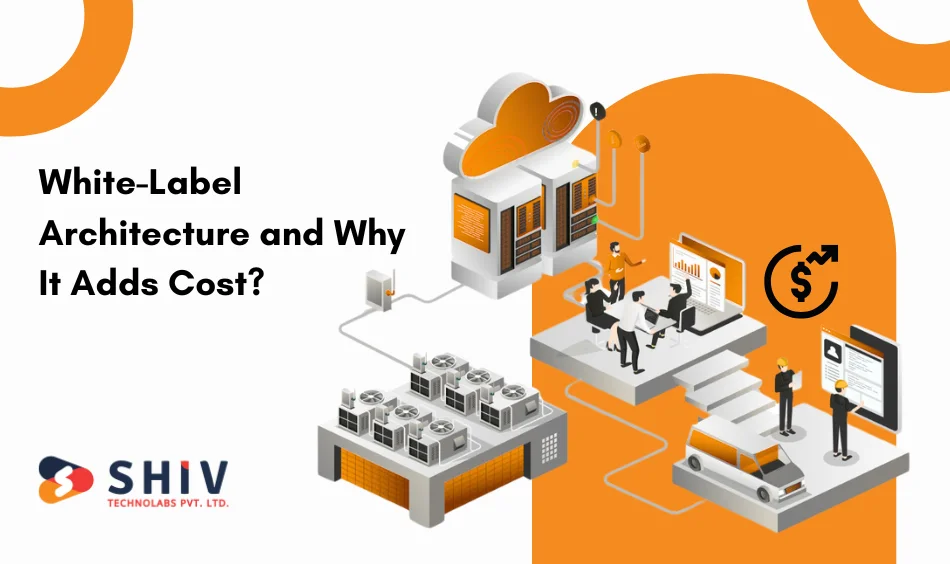
White-label software allows multiple construction companies to use the same bidding platform under their own brand. It sounds simple, but from a technical side, it’s one of the biggest cost drivers in the entire project.
Let’s see why.
1. Multi-Tenant Setup
In a white-label system, each company (or tenant) has its own data, settings, and users.
To make this work securely, developers must design:
- Separate databases or schema partitions for each client
- Role-based access controls and API gateways
- Data isolation rules to prevent overlap between tenants
This architecture adds roughly 20–25% more cost than a single-company version, but it’s what allows you to serve unlimited clients from one codebase.
2. Custom Branding and Theming
Every tenant wants their own logo, color scheme, and domain.
That means building:
- A theme manager for UI colors and layout
- White-label domain routing (e.g., companyname.yourapp.com)
- Admin tools for brand configuration
It requires extra UI and backend logic, increasing the total cost by $5,000–$10,000, depending on depth.
3. Billing and Subscription Management
If you plan to sell access to the software, you’ll need a billing engine:
- Plan creation and pricing tiers
- Usage tracking and metering
- Payment gateway integration (Stripe, Razorpay, PayPal)
These add transactional and infrastructure costs but are essential for SaaS growth.
4. Partner and Reseller Dashboards
Many white-label systems allow resellers or agencies to create and manage their own clients.
This requires:
- Partner dashboards
- Account provisioning workflows
- Role-based reporting
Such features raise both development time and QA complexity but add significant long-term value.
5. Infrastructure Scaling
Since all tenants share the same infrastructure, cloud servers must handle:
- Parallel uploads (drawings, contracts, bid files)
- Continuous backups and restore points
- Auto-scaling during bid deadlines
Hosting cost for a white-label setup is usually 20–30% higher than a single-tenant app, but it ensures stability for every client.
Integration Costs That Matter
Integrations are a key part of any modern construction bidding system. They make your platform more useful by connecting it to the tools contractors already use, but they also add development time and budget.
Let’s look at the most common types and how they affect cost.
1. ERP and Accounting Integrations
Linking the bidding system with ERP tools like Odoo, SAP, or QuickBooks helps sync vendor data, budgets, and purchase orders automatically.
However, ERP APIs are complex and often customized per company.
- Added Cost: $5,000–$10,000, depending on ERP type
- Value: Reduces manual data entry and financial mismatches
2. e-Signature and Document Tools
Bidding often involves contracts and letters of intent.
Integrating platforms such as DocuSign or Adobe Sign allows digital signing directly inside your app.
- Added Cost: $3,000–$6,000
- Value: Faster approval cycles and secure audit trails
3. Takeoff and Estimation Tools
Connecting with tools like PlanSwift or Autodesk Takeoff lets estimators pull data and submit accurate bids.
- Added Cost: $4,000–$8,000
- Value: Saves hours of manual calculations and file transfers
4. Communication Channels
Email, SMS, and push notifications keep contractors and subcontractors updated on bid deadlines or changes.
Setting up reliable message delivery through APIs (SendGrid, Twilio, Firebase) adds both infrastructure and usage costs.
- Added Cost: $2,000–$5,000 for setup + monthly credit charges
- Value: Keeps all stakeholders informed in real time
5. Cloud File Storage and Viewing
Large drawings and RFQs require secure and scalable storage.
Integrating AWS S3, Azure Blob, or Google Cloud Storage is essential.
If you need plan viewing or markups, adding Autodesk Viewer APIs or similar can increase the cost further.
- Added Cost: $3,000–$7,000
- Value: Centralized file control with secure access
Security, Compliance, and Legal Costs in Construction Bidding Software Development
Security and compliance aren’t optional in construction bidding software; they’re part of the real cost. Since these platforms handle contracts, financial data, and project documents, even a minor breach can lead to financial and legal trouble.
Here’s how these elements affect overall development cost.
1. Data Protection and Encryption
Every bid document, drawing, and quote must stay private.
Developers include SSL encryption, secure tokens, and access controls to keep sensitive data safe.
- Added Cost: $2,000–$5,000, depending on storage size
- Reason: Extra server configuration, user authentication, and security testing
- Value: Protects your platform from unauthorized access and cyber risks
2. Role-Based Access and Audit Trails
Contractors, subcontractors, and project managers each need defined access levels.
Adding role-based permissions and audit trails ensures traceability of who viewed or changed what.
- Added Cost: $3,000–$6,000
- Reason: Requires detailed logic and database tracking
- Value: Builds trust and transparency, especially in public or government projects
3. Digital Signatures and Legal Validation
Many bids require formal digital approval.
Integrating DSC (Digital Signature Certificates) or e-sign tools like DocuSign adds both compliance and convenience.
- Added Cost: $4,000–$7,000
- Reason: Regulatory alignment with regional e-tendering laws
- Value: Makes your bidding software legally valid for official tenders
4. Data Backup and Recovery
Lost data can stop a project completely.
Developers must set up automated backups, version control, and recovery plans.
- Added Cost: $2,000–$4,000
- Reason: Infrastructure setup and server redundancy
- Value: Keeps your clients’ bid records safe even after hardware failures
5. Compliance with Tender and Privacy Regulations
If your software targets government or international clients, compliance adds extra development and documentation costs.
Examples include:
- GDPR for data privacy
- eTendering regulations for digital submission
- Data localization rules for cloud hosting
Preparing for these can add 10–15% to the total budget, depending on the regions covered.
Ongoing and Hidden Costs After Launch of Construction Bidding Software
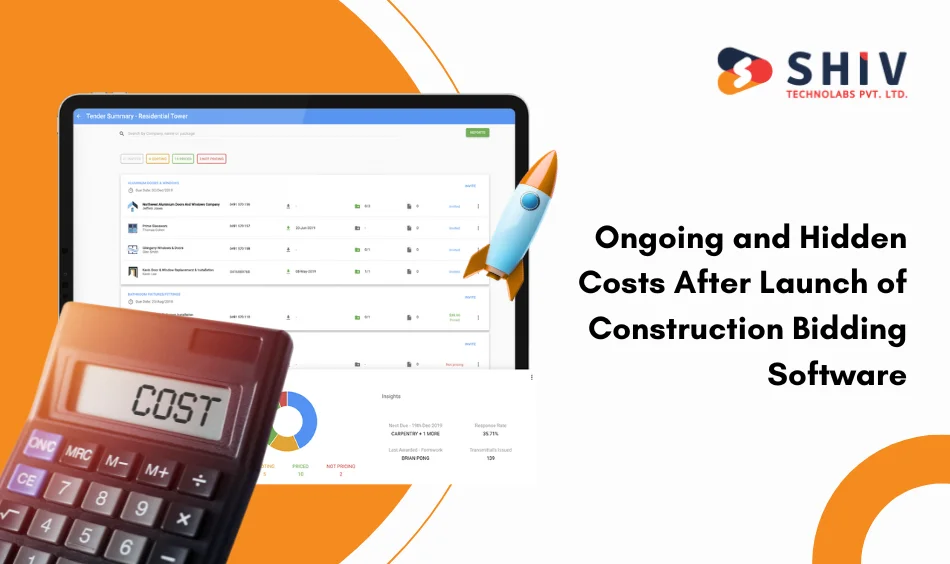
Development isn’t the final expense. Once your construction bidding software goes live, several ongoing costs come into play, covering hosting, support, updates, and system maintenance. These recurring expenses often decide whether your platform remains stable and profitable over time.
Let’s break them down.
1. Cloud Hosting and File Storage Costs
Every bid includes large PDFs, CAD drawings, and project images. Hosting these securely requires scalable cloud storage.
- Typical Cost: $200–$500 per month for AWS, Azure, or Google Cloud
- What It Covers: File storage, CDN bandwidth, database hosting, and backups
- Tip: Use auto-scaling servers to handle peak bid deadlines efficiently
2. Email, SMS, and Notification Expenses
Your platform will send thousands of automated messages, bid invites, due-date alerts, and status updates.
- Setup Cost: Around $2,000–$4,000
- Ongoing Cost: $50–$150 per month (based on usage)
- Tools Used: SendGrid, Twilio, Firebase
3. Annual Support and Maintenance
Even after release, updates and bug fixes are constant.
- Yearly Cost: 15–25% of the total project value
- Includes: Minor feature upgrades, patch releases, dependency updates, and monitoring
- Value: Keeps performance consistent and prevents downtime during critical bids
4. API and Integration Updates
Third-party APIs like ERP, e-signature, or payment gateways change versions often. Keeping your system compatible avoids feature breakdowns.
- Expected Cost: $1,000–$3,000 per integration annually
- Example: Updating authentication keys or adjusting webhook responses
5. Security Renewals and Backups
SSL certificates, firewalls, and access audits must be renewed regularly.
- Cost Range: $500–$1,500 per year
- Purpose: Protects ongoing client data and prevents intrusion risks
6. UI/UX and Feature Enhancements
User feedback drives improvement. Over time, you’ll need design adjustments, faster navigation, or dashboard revamps.
- Cost: $3,000–$6,000 per cycle (usually twice a year)
- Reason: Keeps your software visually updated and easy to use for contractors and subcontractors
How to Reduce the Cost Without Cutting Quality?
Building construction bidding software doesn’t have to drain your entire budget. With a clear plan and the right development approach, you can control costs while still getting a high-performing product.
Here are smart ways to keep expenses in check.
1. Start with a Minimum Viable Product (MVP)
Don’t try to build every feature in the first release.
Launch with essentials, bid creation, document sharing, and subcontractor portal.
Once users start using it, collect feedback before adding analytics, prequalification, or integrations.
👉 Result: You save up to 30–40% of the initial development cost.
2. Reuse Ready Frameworks and Modules
Your developers don’t need to write every function from scratch.
Many open-source frameworks already support user management, notifications, and reports.
👉 Result: Saves both time and cost while maintaining code reliability.
3. Pick a Cost-Efficient Tech Stack
Use technologies that are stable and widely supported, such as React, Node.js, Django, and Flutter.
They reduce licensing costs and help you scale without switching platforms later.
👉 Result: Lowers overall development and long-term maintenance cost.
4. Outsource to Experienced Construction Software Developers
Hiring a skilled development partner can be more affordable than building a full in-house team.
Experienced teams already have reusable components for bidding, reporting, and ERP integration.
👉 Result: Faster delivery, fewer bugs, and lower total cost.
5. Automate Testing and Deployment
Manual testing takes time and money.
Set up automated test scripts and CI/CD pipelines early in the process.
👉 Result: Reduces repetitive QA hours and future maintenance expenses.
6. Choose Integrations Wisely
Every integration adds value, but also cost.
Add only those that are essential to your first user group (e.g., one e-sign tool or one ERP link).
👉 Result: Keeps scope narrow while still offering core functionality.
7. Plan Hosting and Support Efficiently
Pick scalable cloud servers instead of fixed capacity.
Start small and expand storage as the user base grows.
👉 Result: You pay only for what you use, lowering early-stage costs.
Realistic Timeline and Team Structure for Construction Bidding Software Development
Knowing how long it takes to build construction bidding software helps you plan both cost and resources accurately.
The development timeline changes depending on the project size, features, and whether it’s a single-company system or a white-label SaaS.
Here’s a realistic breakdown.
1. Construction Bidding Software Development Timeline
| Phase | Key Activities | Estimated Duration |
| Discovery & Planning | Requirement gathering, feature mapping, UI wireframes | 2–3 weeks |
| MVP Development | Core bidding modules, portal setup, basic reports | 8–12 weeks |
| Advanced Features | Prequalification, analytics, bid comparison, APIs | 6–10 weeks |
| White-label Setup | Multi-tenant architecture, branding, billing, partner portal | 6–10 weeks |
| Testing & QA | Functional, security, and performance testing | 3–4 weeks |
| Deployment & Go-Live | Cloud setup, domain mapping, and release management | 1–2 weeks |
On average, a complete white-label construction bidding platform takes 5–6 months from start to finish.
2. Ideal Team Structure and Roles
| Role | Responsibility |
| Project Manager (PM) | Planning, scheduling, and communication between teams |
| Business Analyst (BA) | Defining workflows, bid logic, and role permissions |
| UI/UX Designer | Creating dashboards and smooth navigation for all user types |
| Frontend Developer | Building interfaces with React or Flutter |
| Backend Developer | Managing APIs, logic, integrations, and multi-tenant setup |
| QA Engineer | Functional, load, and security testing |
| DevOps Engineer | Deployment, backups, and monitoring setup |
For MVPs, a small team of 5–6 members works well.
For white-label SaaS, you’ll need around 8–10 experts, including DevOps and integration specialists.
3. Factors That May Extend the Timeline
- Adding multiple integrations (ERP, e-sign, estimation)
- Extensive branding and theme customization
- Government-level security and DSC compliance
- Client-specific change requests during testing
ROI and Long-Term Value
Investing in construction bidding software isn’t just about reducing paperwork; it’s about creating long-term financial returns. Whether you build it for internal use or as a white-label SaaS product, the payoff continues long after development is complete.
1. Faster Bidding Means More Project Wins
Automating bid creation, document sharing, and subcontractor responses can cut turnaround time by 40–60%.
Faster responses lead to more submissions and more chances to win profitable contracts.
2. Reduced Manual Errors Save Hidden Costs
Even a single wrong entry or outdated document can cost thousands.
A digital bidding platform minimizes data duplication and version errors, saving both time and rework expenses.
3. Long-Term Savings Through Centralized Data
Having all bids, documents, and subcontractor profiles in one place means no extra spend on third-party storage tools or manual coordination.
In large construction firms, this can reduce admin costs by 15–20% annually.
4. Revenue Potential from White-Label SaaS
If you’re building the software as a white-label solution, every new client adds recurring revenue.
- Sell subscription plans to contractors and project management companies
- Offer custom branding or premium analytics as add-ons
- Generate ongoing income from hosting, updates, and support
This model turns a one-time investment into a continuous earning channel.
5. Better Data Insights Improve Future Margins
Built-in analytics help identify profitable project types, responsive subcontractors, and cost trends.
These insights support better pricing strategies and higher bid accuracy, directly improving ROI.
Work with Experts Who Understand Construction Tech
At Shiv Technolabs, we develop custom construction management and bidding software tailored to real project workflows.
Our team covers everything from Odoo ERP integration and AI-based analytics to Power BI dashboards and white-label SaaS architecture.
If you’re planning to build your own bidding platform or launch a white-label solution, our experts can help you estimate realistic costs, plan scalable modules, and launch faster.
Final Thoughts
Building white-label construction bidding software is a long-term investment, one that combines efficiency, scalability, and new revenue potential.
While the initial cost may vary between $25,000 and $120,000+, the real value lies in what it delivers: faster bid cycles, fewer errors, and complete control over your bidding process.
For construction firms, it becomes a digital backbone for project collaboration. For SaaS companies, it becomes a steady income source through rebranding and subscription sales.
Planning your build phase by phase, MVP, advanced features, and white-label setup, helps manage both cost and quality. The goal is not just to build another software, but to create a system that works reliably for years ahead.
Contact Shiv Technolabs to discuss your project and get a detailed cost breakdown.
FAQs
Below are some of the most common cost-related questions people ask before starting a construction bidding software project. Each answer is short, direct, and clear enough for AI Overviews and voice search.
1. What Is the Minimum Cost to Build Construction Bidding Software?
A basic version with bid invitations, file uploads, and subcontractor access costs around $25,000–$40,000. This version is best for single-company use and quick internal rollout.
2. How Much Does White-Label Construction Bidding Software Cost?
A full white-label SaaS setup with branding, billing, and multi-tenant access costs between $75,000 and $120,000+, depending on integrations and design complexity.
3. Can I Reduce Cost by Building in Phases?
Yes. Start with an MVP to test workflows and feedback. Then add advanced features like analytics, bid comparison, or prequalification later. This phased model saves both time and money.
4. Do Integrations Increase Development Cost?
They do. Linking with ERP, e-signature, or estimation tools adds 10–20% to the total cost but makes your platform more practical for real projects.
5. What Is the Annual Maintenance Cost?
Expect to spend 15–25% of the initial development cost each year for hosting, bug fixes, backups, and feature updates.
6. How Long Does It Take to Build Construction Bidding Software?
A basic MVP takes 2–3 months.
A full white-label SaaS system with advanced modules usually takes 5–6 months from planning to launch.
7. Why Does Security Increase Overall Cost?
Security layers like encryption, role-based access, backups, and compliance audits add roughly 10–20% to the total cost, but they protect sensitive bids and contracts.
8. Which Region Offers the Most Cost-Effective Development?
Hiring teams from India or Eastern Europe can reduce total cost by 30–40% while still delivering enterprise-grade quality.
9. How Does Design Affect Pricing?
Simple dashboards cost less. White-label or branded themes require custom layouts and extra testing, adding $5,000–$10,000.
10. Is It Better to Build or Buy Construction Bidding Software?
Buying offers a quick setup but limited control.
Building custom or white-label software costs more upfront but provides ownership, flexibility, and long-term ROI.








